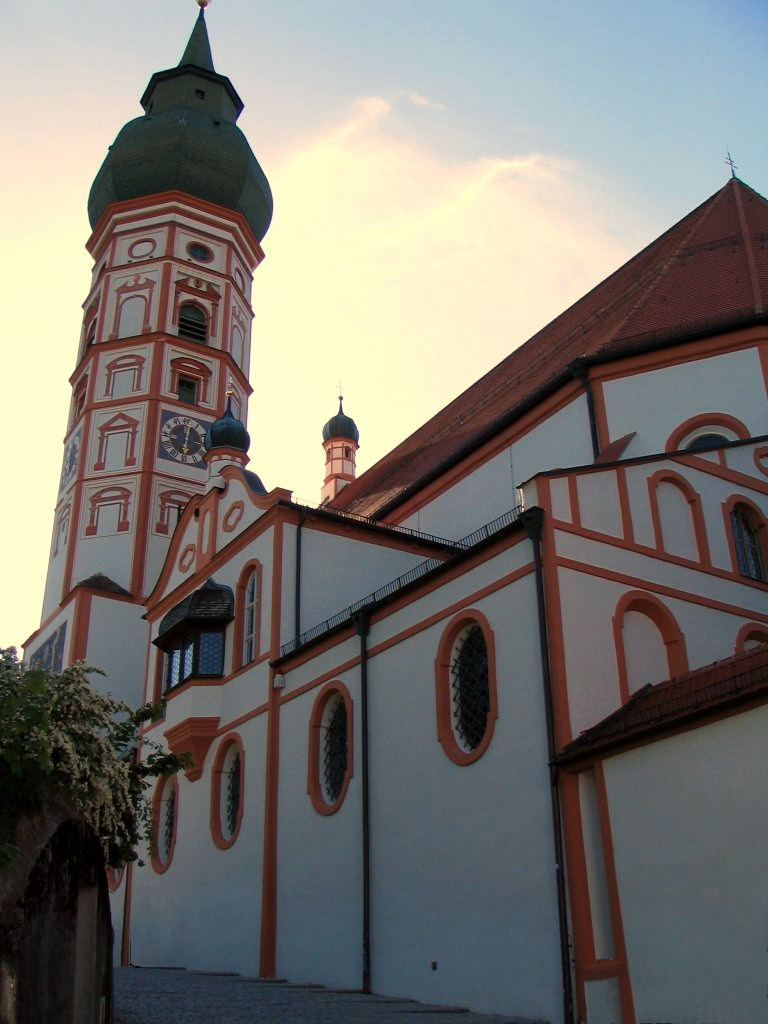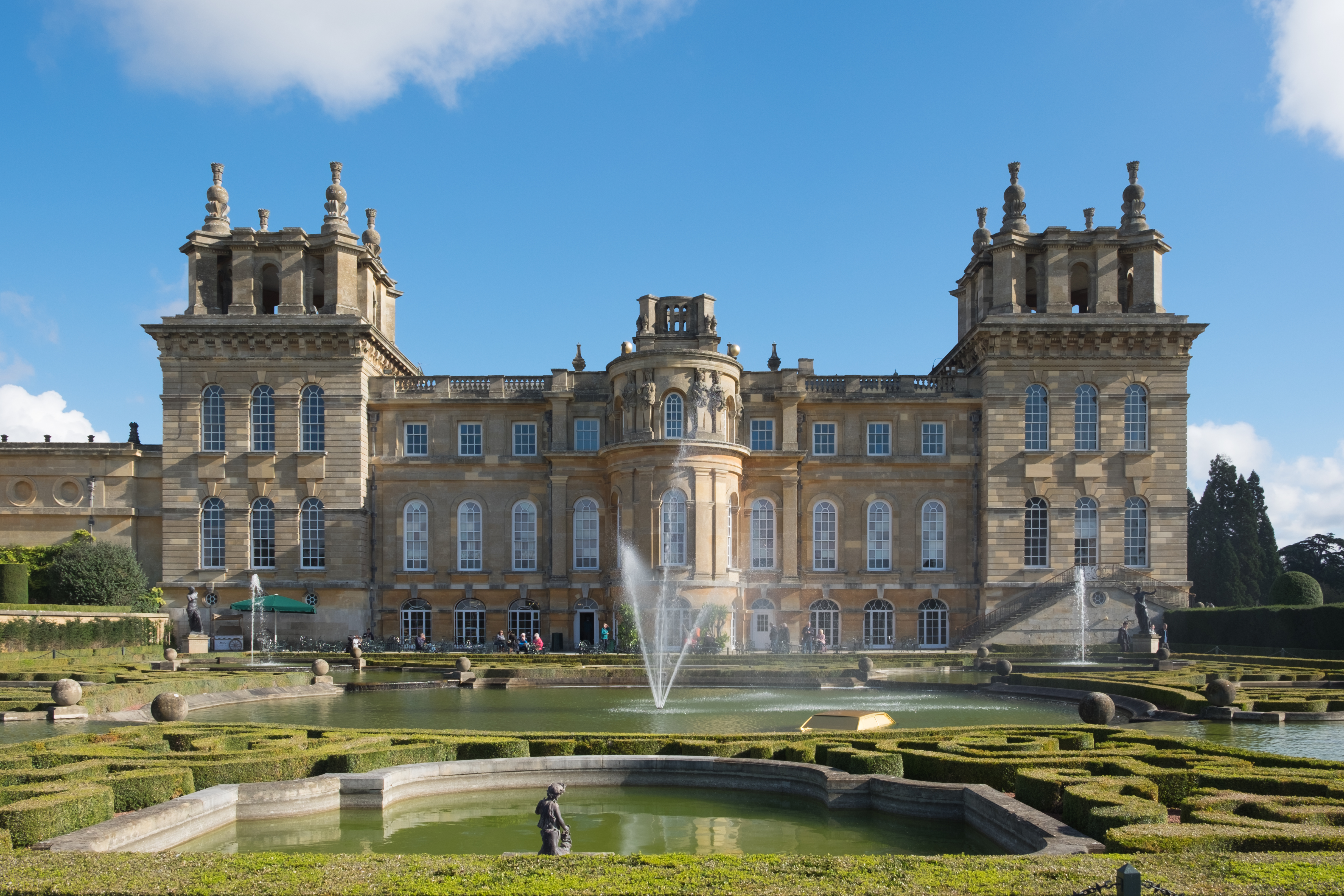|
Schloss Fußberg
Schloss Fußberg is a stately house in the village of Gauting, Bavaria, Germany dating from 1721. History Schloss Fußberg lies to the north of the historic center of Gauting on the left bank of the Würm. It is named after the 12th century noble family of Fuß, also written as Fuoz, Vuoz or in Latin "pes", followers of the House of Wittelsbach. The original castle was in a loop of the Würm, protected by a moat. The octagonal tower was first documented in 1342. No traces remain. The replacing castle with living quarters and farm buildings was built in the 16th century. It was depicted in 1701 in Michael Wening's ''Historico-Topographica descriptio Bavariae''. The present building was erected in 1721 on the medieval foundations. It is a baroque building that served as a summer residence for the Andechs Abbey and a resting place on the route to Munich. After the monasteries were secularized, in 1819 the castle was acquired by Karl Theodor Maria, Freiherr von Hallberg-Broich die A ... [...More Info...] [...Related Items...] OR: [Wikipedia] [Google] [Baidu] |
Gauting
Gauting is a Municipalities of Germany, municipality in the Starnberg (district), district of Starnberg, in Bavaria, Germany with a population of more than 20,000 inhabitants. It is situated on the river Würm (Amper), Würm, southwest of Munich and is a part of the Munich metropolitan area. Geography Stockdorf, Grubmühl, Buchendorf, Königswiesen, Hausen, Unterbrunn and Oberbrunn are included under the administration of Gauting. The municipality itself is surrounded by the Forstenrieder Park in the east, Mühltal in the south, Kreuzlinger Forst in the west and Grubmühl in the north. History Although the name, Gauting, is first mentioned in 753, settlements in the Gauting area traces back to early Bronze Age and is thus amongst the earliest in upper Bavaria. Cairns in Stockdorf and a large Celts, Celtic trench, entrenchment offer evidence of the prehistoric dwellings. Under the Roman Empire the settlement, then called Bratananium, marked a major crossroad of Via Julia, ... [...More Info...] [...Related Items...] OR: [Wikipedia] [Google] [Baidu] |
Würm (Amper)
The Würm is a river in Bavaria, Germany, right tributary of the Amper. The length of the river is , or including the ''Steinbach'', the main feed of Lake Starnberg. It drains the overflow from Lake Starnberg and flows swiftly through the villages of Gauting, Krailling, Planegg, Gräfelfing and Lochham as well as part of Munich (in the borough of Pasing) before joining, near Dachau, the Amper, which soon afterwards flows into the Isar and eventually into the Danube. Although the Würm is not a very large river, it is well known as it gave its name to the Würm glaciation. A small man-made channel extracts water from the river at Pasing to feed the water features at Nymphenburg Palace, before flowing on to join the Isar at the public park Englischer Garten in Munich. See also *List of rivers of Bavaria A list of rivers of Bavaria, Germany: A * Aalbach * Abens * Ach * Afferbach * Affinger Bach * Ailsbach * Aisch * Aiterach * Alpbach *Alster * Altmühl * Alz * Amper * Anlaut ... [...More Info...] [...Related Items...] OR: [Wikipedia] [Google] [Baidu] |
House Of Wittelsbach
The House of Wittelsbach () is a former Bavarian dynasty, with branches that have ruled over territories including the Electorate of Bavaria, the Electoral Palatinate, the Electorate of Cologne, County of Holland, Holland, County of Zeeland, Zeeland, Sweden (with Finland under Swedish rule, Swedish-ruled Finland), Denmark, Norway, Kingdom of Hungary, Hungary, Kingdom of Bohemia, Bohemia, and Kingdom of Greece, Greece. Their ancestral lands of Bavaria and the Electoral Palatinate, Palatinate were prince-electorates, and the family had three of its members elected emperors and kings of the Holy Roman Empire. They ruled over the Kingdom of Bavaria which was created in 1805 and continued to exist until 1918. The House of Windsor, the reigning royal house of the British monarchy, are descendants of Sophia of Hanover (1630–1714), a Wittelsbach Princess of the Palatinate by birth and List of Hanoverian royal consorts, Electress of Hanover by marriage, who had inherited the success ... [...More Info...] [...Related Items...] OR: [Wikipedia] [Google] [Baidu] |
Michael Wening
Michael Wening (11 July 1645 – 18 April 1718) was a Bavarian engraver who is known for his many depictions of important places in the Bavaria of his day, including cityscapes and views of stately homes, castles and monasteries. The work has great historical value. Early years Michael Wening was born on 11 July 1645 in Nuremberg, Bavaria, son of Balthasar and Katharina Wening. His parents had 13 children, of whom he was the only survivor. His father was a pork butcher and meat inspector. Michael did not follow his father's trade, but became an engraver. In the 1660s he was working for the Nuremberg publishing houses of Fürst and Hoffmann, where he learned to draw cityscapes. Wening left Nuremberg in the spring of 1668, and is first mentioned in Munich in December 1669, where he applied for work at the court as an engraver. At this time he converted from the Protestant to the Catholic church, perhaps because it was very hard for non-Catholics to find work in Munich. He married ... [...More Info...] [...Related Items...] OR: [Wikipedia] [Google] [Baidu] |
Baroque Architecture
Baroque architecture is a highly decorative and theatrical style which appeared in Italy in the late 16th century and gradually spread across Europe. It was originally introduced by the Catholic Church, particularly by the Jesuits, as a means to combat the Reformation and the Protestantism, Protestant church with a new architecture that inspired surprise and awe. It reached its peak in the High Baroque (1625–1675), when it was used in churches and palaces in Italy, Spain, Portugal, France, Bavaria and Austria. In the Late Baroque period (1675–1750), it reached as far as Russia, the Ottoman Baroque architecture, Ottoman Empire and the Spanish colonization of the Americas, Spanish and Portuguese colonization of the Americas, Portuguese colonies in Latin America. In about 1730, an even more elaborately decorative variant called Rococo appeared and flourished in Central Europe. Baroque architects took the basic elements of Renaissance architecture, including domes and colonnades, ... [...More Info...] [...Related Items...] OR: [Wikipedia] [Google] [Baidu] |
Andechs Abbey
Andechs Abbey is a Benedictine monastery, now a priory but formerly an abbey, in the municipality of Andechs, in the Starnberg (district), ''Landkreis'' of Starnberg, Upper Bavaria, Germany. A place of pilgrimage on a hill east of the Ammersee, the Abbey is famed for its flamboyant Baroque architecture, Baroque church and its brewery, Klosterbrauerei Andechs, the proceeds from which help fund the monks' mission of help. Composer Carl Orff is buried in the Church (building), church. Background In 955, relics brought from Rome and the Holy Land by Rasso, count of Diessen, to his monastery at Wörth (later called Grafrath) were transferred to the ''heilege'' Berg (holy mountain) to preserve them from the ravages of the Hungarian people, Hungarians. Around 1100, Berthold II, Count of Andechs built a new residence on a hill outside Andechs. In the 12th century three Sacramental bread, hosts, reputed to have been consecrated by Pope Gregory I and Pope Leo IX, were added to the relics ... [...More Info...] [...Related Items...] OR: [Wikipedia] [Google] [Baidu] |
Munich
Munich is the capital and most populous city of Bavaria, Germany. As of 30 November 2024, its population was 1,604,384, making it the third-largest city in Germany after Berlin and Hamburg. Munich is the largest city in Germany that is not a state of its own. It ranks as the 11th-largest city in the European Union. The metropolitan area has around 3 million inhabitants, and the broader Munich Metropolitan Region is home to about 6.2 million people. It is the List of EU metropolitan regions by GDP#2021 ranking of top four German metropolitan regions, third largest metropolitan region by GDP in the European Union. Munich is located on the river Isar north of the Alps. It is the seat of the Upper Bavaria, Upper Bavarian administrative region. With 4,500 people per km2, Munich is Germany's most densely populated municipality. It is also the second-largest city in the Bavarian language, Bavarian dialect area after Vienna. The first record of Munich dates to 1158. The city ha ... [...More Info...] [...Related Items...] OR: [Wikipedia] [Google] [Baidu] |
Belvedere (structure)
A belvedere or belvidere ( ; from ) is an architectural structure sited to take advantage of a fine or scenic view. The term has been used both for rooms in the upper part of a building or structures on the roof, or a separate pavilion in a garden or park. The actual structure can be of any form or style, including a turret, a cupola or an open gallery. The term may be also used for a paved terrace or just a place with a good viewpoint, but no actual building. It has also been used as a name for a whole building, as in the Belvedere, Vienna, a huge palace, or Belvedere Castle, a folly in Central Park in New York. Examples On the hillside above the Vatican Palace (–1490), Antonio del Pollaiuolo built a small pavilion ( in Italian) named the ''palazzetto'' or the Belvedere for Pope Innocent VIII. Some years later Donato Bramante linked the Vatican with the Belvedere, a commission from Pope Julius II, by creating the Cortile del Belvedere ("Courtyard of the Belvedere"), ... [...More Info...] [...Related Items...] OR: [Wikipedia] [Google] [Baidu] |
Castles In Bavaria
Numerous castles are found in the German state of Bavaria. These buildings, some of which have a history of over 1,000 years, were the setting for historical events, domains of famous personalities, and are still imposing structures to this day. This list encompasses castles described in German as ''Burg'' (castle), ''Festung'' (fort/fortress), ''Schloss'' (manor house) and ''Palais''/''Palast'' (palace). Many German castles after the Middle Ages were built mainly as royal or noble residences rather than as fortified buildings. Regierungsbezirk Oberbayern Altötting (district), Altötting # Burghausen Castle ('':de:Burg zu Burghausen, in German'') # Castle Tuessling ('':de:Schloss Tüßling, in German'') Bad Tölz-Wolfratshausen # Seeburg (Münsing) # Schloss Hohenburg # Hohenburg (Lenggries) (ruin) Berchtesgadener Land # Berchtesgaden Castle ('':de:Königliches Schloss Berchtesgaden, de'') # Gruttenstein Castle ('':de:Burg Gruttenstein, de'') # Burgruine Karlstein ... [...More Info...] [...Related Items...] OR: [Wikipedia] [Google] [Baidu] |






